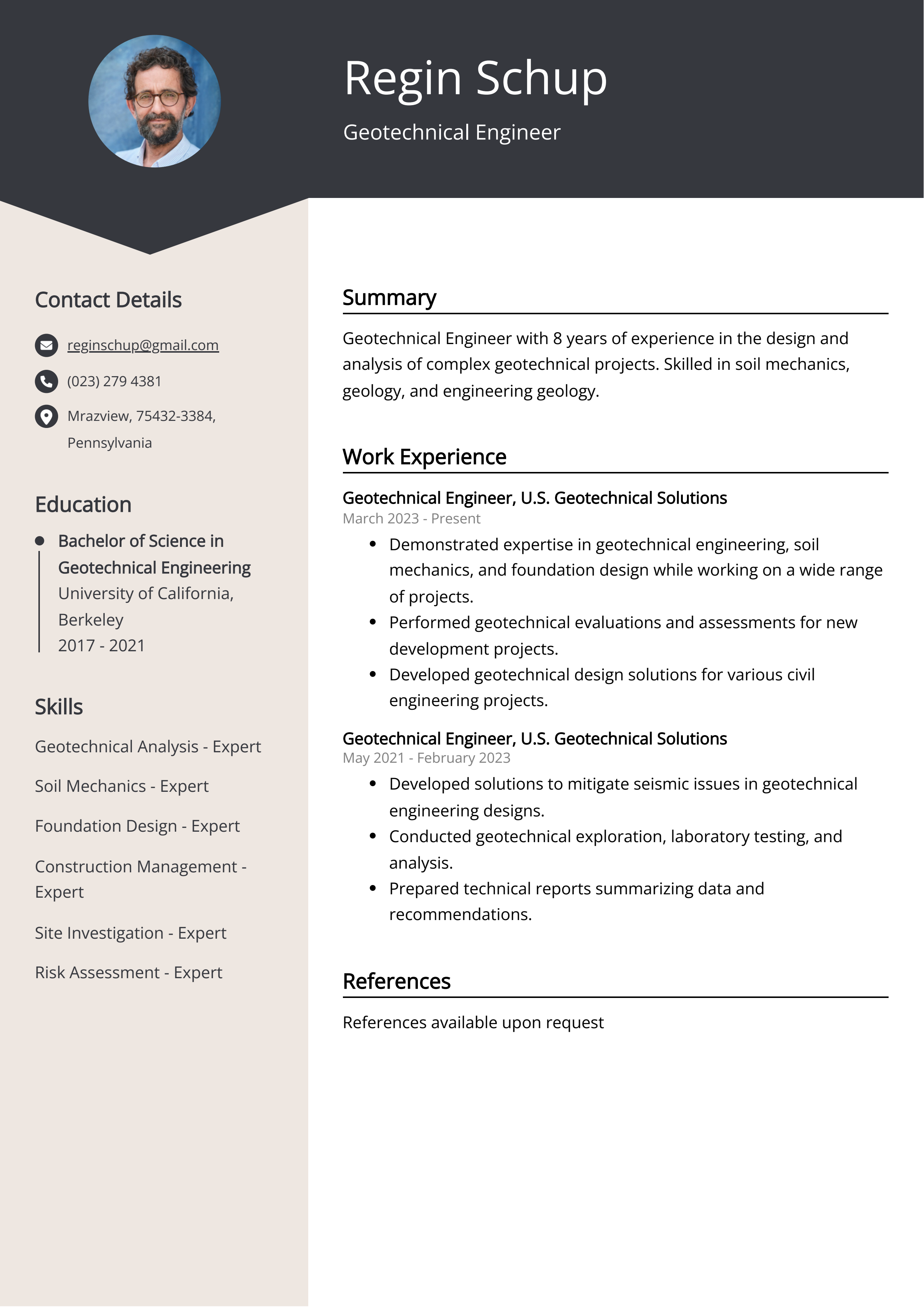4 Simple Techniques For Geotheta
4 Simple Techniques For Geotheta
Blog Article
Geotheta - Truths
Table of ContentsUnknown Facts About GeothetaThe Best Strategy To Use For Geotheta3 Easy Facts About Geotheta DescribedSome Known Details About Geotheta
They work together with civil designers, structural engineers, engineers, and other professionals to incorporate geotechnical considerations into the total project design and building process. This requires efficient team effort, coordination, and interaction to make sure that the geotechnical facets straighten with the job goals and meet regulatory demands.Mining & Materials Engineering: Concepts of drilling, penetration prices, and aspects impacting the option of drilling approach. Qualities of explosives, shooting systems and blast patterns. Blowing up techniques in surface area and underground functions. Special blowing up methods at excavation perimeters. Vibration and noise control. Mechanical and constant methods to fragmentation, including longwall shearing and fullface boring.
Modelling of piece and particle size circulations; comminution as a transfer function. Comminution modern technology: crushing, grinding, size classification. Integrated analysis of fragmentation and comminution procedures. Offered by: Mining & Materials Design.
6 Simple Techniques For Geotheta
Bachelor's level programs in civil, geotechnical, geological, and ecological engineering normally last 4 years and consist of basic education programs in English, social scientific research, and the liberal arts, in addition to courses in sophisticated maths, architectural geology, and fluid mineralogy. (https://geotheta.wordpress.com/2024/08/02/unlocking-the-secrets-of-geotechnical-engineers-the-geotheta-advantage/)
Geotechnical design involves the evaluation of the dirt and rock conditions at a certain site, and their effects for the development of that site. As the majority of structures rely upon the ground for support, it is without surprise that a thorough understanding of the ground conditions, and the viability of foundation systems, are important to the lasting security and efficiency of the building or structure.
Being experts in the investigation of geological formations and ground practices, geotechnical engineers carry out clinical examinations and screening to understand the effect these geological developments might have on the style and building and construction of building, civil and facilities jobs. This expertise is important for the layout and construction of buildings, roads, tunnels, dams, bridges, and water system and sewer system.
The geotechnical group at Douglas Allies routinely seek advice from engineers, layout engineers, programmers, and home builders to make referrals on layout and development proposals to guarantee that the developed frameworks are accordingly designed for the ground conditions. The design of footing systems needs to take into consideration the weight of the framework, the capacity of the ground to sustain that weight together with motion tolerances and efficient construction.
The 5-Minute Rule for Geotheta
This task is substantially streamlined by the use our Douglas Map geospatial system which makes this information conveniently easily accessible in an easy to make use of web internet browser interface. A geotechnical engineer will certainly guide the drilling of boreholes and examination pits to gather dirt and other examples, and likewise evaluate surface attributes and ground exposures to develop a geotechnical model of the subsurface problems.
Depending on the job kind and ground problems came across, research laboratory screening may among other points assess toughness, compressibility, reactivity and/or permeability of soil and rock examples. After this information is accumulated and collected, the results are used for a geotechnical version of the site, which is normally offered as areas across the website.

A geotechnical investigation naturally can only analyze the ground conditions at the locations drilled or dug deep into. Natural variants in dirt and rock conditions can happen across a site and between test areas. It is consequently good technique that the geotechnical designer be preserved throughout construction of the project to supply on-site verification that the ground problems encountered are regular with the assumptions and guidance offered in the geotechnical investigation record.
Get This Report about Geotheta
Geotechnical engineers utilize their extensive knowledge of dirt and rock to analyze danger and solve Source issues on varied framework projectsGeotechnical design is a specialist branch of civil engineering which considers the behaviour of earth materials and the application of dirt and rock mechanics. Tailings Engineer. As a geotechnical engineer, you will examine the physical, mechanical and chemical homes of soil and rock in order to develop foundations, retaining structures and earthworks
Geotechnical design is carefully linked to and overlaps with, both design geology and ground engineering - https://www.brownbook.net/business/52934980/geotheta/. It's possible to be experts in geotechnics or help a geotechnical company but be called an engineering geologist or a ground engineer. As a geotechnical designer, you'll require to: develop and keep partnerships with customers and other experts associated with the website, throughout each projectmaintain security requirements on website bear in mind cost effects when you make recommendationsstudy geological maps and airborne photos from a series of resources and from different time periodsexamine building and construction prepares to see exactly how feasible they are based on your understanding of the siteinvestigate threats or geological risks for the sitesearch for environmentally sensitive functions, such as garbage dump start to develop valid and expository ground modelsplan field investigationsdrill and evaluate samples of bedrock, dirt, groundwater and extra materials supervise various other experts on sitesolve technological problems as they arise, such as unexpected structures at drill sitesmonitor problems throughout and after building and construction to ensure frameworks are stable in the brief and long termadding information collected on website to your preliminary researchcreating geotechnical calculations, illustrations, and two or three-dimensional computer system models translating the datamaking suggestions about the recommended use the site

Report this page